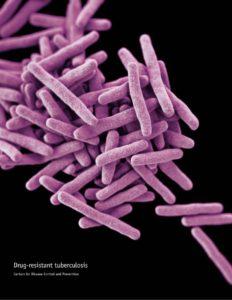CD4 T cells, particularly those capable of producing IFN-γ have been shown to play an essential role in immunity against Mycobacterium tuberculosis (M.tb) infection and diseases. In spite of this, strong CD4 T cell IFN-γ responses induced by natural infection or current (and experimental) vaccines are unable to induce consistent protection against tuberculosis (TB). Highlighting the need for an improved understanding of T cell responses beyond cytokine function.
Lindenstrøm et al., researchers from Denmark and USA, aimed to compare functional, phenotypic and protective attributes of long term immunity induced by either M.tb-infection or H56/CAF01 vaccination (termed as H56 –memory). Lindenstrøm et al. utilised a “latent” M.tb infection mouse model (termed as M.tb-memory), where mice were infected with a low aerosol dose of M.tb (Erdmann strain) followed by a 12-week Isoniacid/Rifabutin (INH/RIF) treatment . INH/RIF treatment in M.tb-memory miceresulted in uncultivable bacteria in most mice up to 72 weeks post-treatment.
Using an aerosol M.tb challenge model, Lindenstrøm et al. demonstrated improved protection against M.tb challenge in H56-memory mice compared to M.tb-memory and control mice. Phenotypic characterisation of ESAT6-specific (sp) CD4 T cells in the lungs of M.tb challenged mice, showed higher expression levels of KLRG1, late T cell differentiation marker, in M.tb-memory mice than H56-memory mice. Additionally, ESAT-6-sp CD4 T cells from M.tb-memory and control mice were predominantly IFN-γ±TNF±, whereas ESAT-6-sp CD4 T cells from H56-memory mice were predominantly TNF–α+IL2±IFN-γ± with a significantly high expression of IL-2, a function absent in M.tb-memory and control mice.
Lindenstrøm et al. utilised a T cell co-transfer model, to compare the lung homing capacity of T cells from M.tb-memory and H56-memory mice. Briefly, ESAT-6-sp CD4 T cells from M.tb- and H56-memory were transferred at 1:1 ratio to recipient mice. This experiment demonstrated superior lung homing capacity of ESAT-6-sp CD4 T cells from H56-memory mice compared to M.tb-memory mice.
This research highlights the role antigen: whole cell (M.tb) vs fusion protein with adjuvant (H56) and/or method: aerosol (M.tb) vs vaccination (H56) plays in T cell differentiation. Where priming a memory response with H56 vaccination results in quiescent less differentiated, “protective” T cell responses that have superior lung parenchyma homing ability compared to whole mycobacterium (M.tb and BCG) priming.
Journal Article: Lindenstrøm et al. 2017. T Cells Primed by Live Mycobacteria Versus a Tuberculosis Subunit Vaccine Exhibit Distinct Functional Properties. EBioMedicine.
Article by Cheleka AM Mpande












